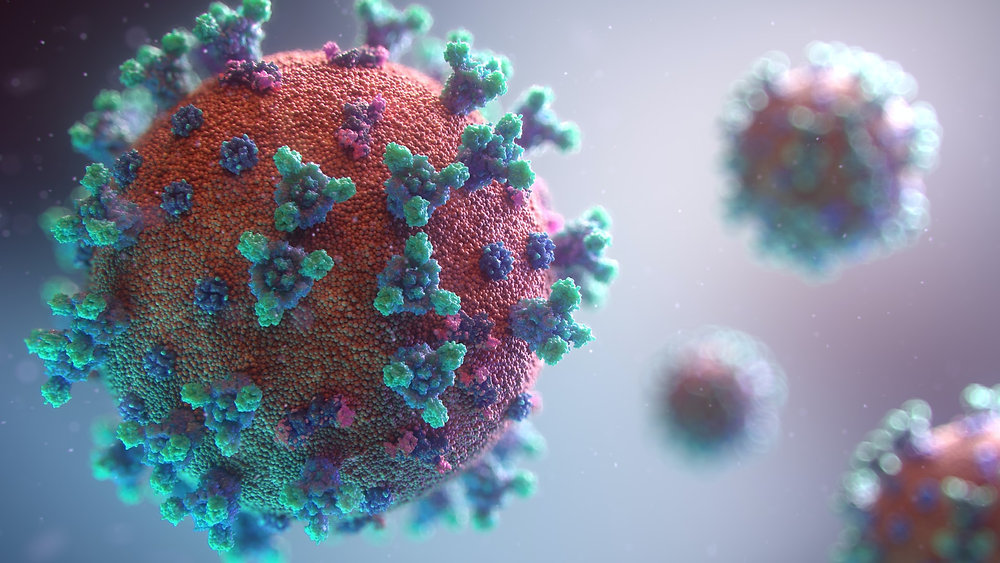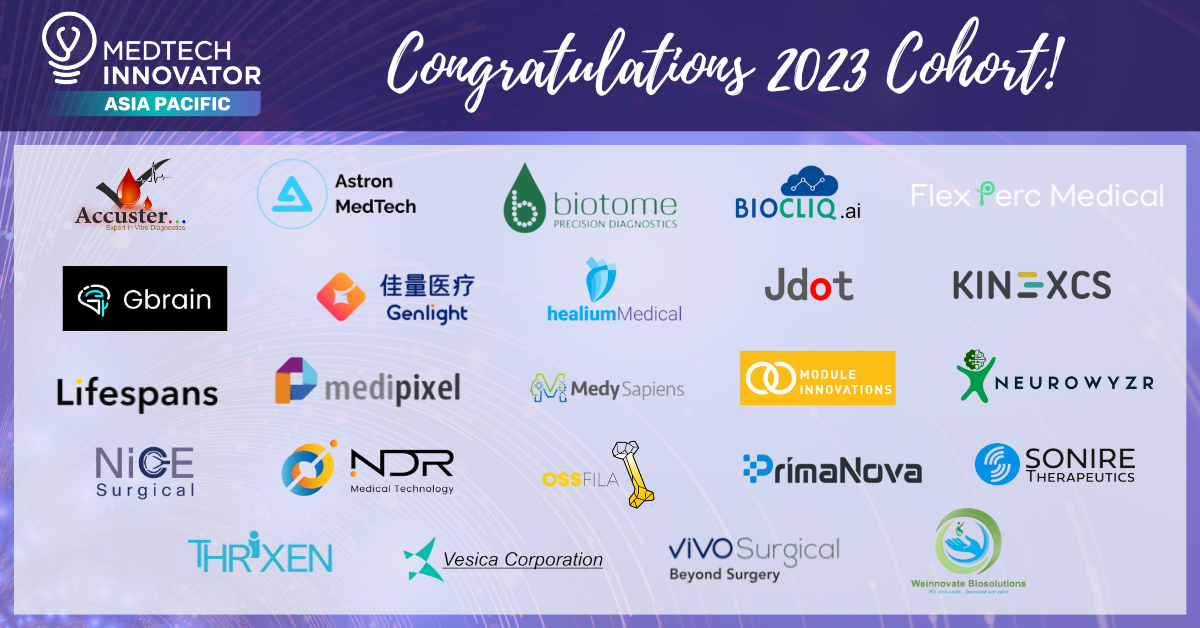You are using an out of date browser. It may not display this or other websites correctly.
You should upgrade or use an alternative browser.
You should upgrade or use an alternative browser.
BRN Discussion Ongoing
- Thread starter TechGirl
- Start date
ARM M4 with a NPU
Sign Up | LinkedIn
500 million+ members | Manage your professional identity. Build and engage with your professional network. Access knowledge, insights and opportunities.www.linkedin.com
ARM have an in-house NPU which uses MAC:
GB2611751A Neural network processing 20211008
In Figure 3, the MAC unit 202 may perform an initial convolution operation and store the results of that operation in the accumulator buffer 205. Then, the result of that accumulation operation may be read 301 by the activation output unit 203 from the accumulator buffer 205 and scaled 304 and stored in a local storage, chaining buffer 206 for the activation output unit 203 for use as input data to a subsequent elementwise operation.
Using MAC is slower and more power intensive than Akida's SNN.
The ARM NPU video cites 20 ms reaction time, which corresponds to 50 fps, so not bad, but Akida is faster.
quick update on another Aussie that has an openly confirmed link to Brainchip.. Biotome.

 www.biotome.com.au
www.biotome.com.au
These guys have been very successful over the past 12 months with funding to promote further research into diagnostic biomarkers.. it appears everyone they run into believe they are headed in the right direction.. and now find themselves on a global stage with exposure to some of the largest Health Companies in the world...


 medtechinnovator.org
medtechinnovator.org
In short..
Over 400 companies applied for the Asia Pacific program this year, and after a rigorous selection process, 60 companies were invited to pitch, 24 of which were named to the 2023 cohort. In early December, four startups from the 2023 Asia Pacific cohort will advance to compete in the Grand Finals to be held at APACMed’s Medtech Forum 2023 in Singapore. Attended by health care industry leaders, health care providers, and investors from across the region, the MedTech Forum will also showcase solutions from all 24 Accelerator cohort companies.
This leads to exposure to :
MedTech Innovator’s 2023 Asia Pacific program sponsors include Johnson & Johnson, Olympus, Teleflex, Siemens Healthineers, B Braun Medical, Cambridge Consultants, JABIL Healthcare and Enterprise Singapore.

New Research Collaboration with BrainChip for SARS-CoV-2 Antibody Detection
Perth, Australia April 5, 2021 – BrainChip Holdings Ltd (ASX: BRN), a leading provider of ultra-low power high performance artificial intelligence technology, today announced that the Brainchip Research Institute in Perth has entered into a research collaboration with precision immunology...
 www.biotome.com.au
www.biotome.com.au
These guys have been very successful over the past 12 months with funding to promote further research into diagnostic biomarkers.. it appears everyone they run into believe they are headed in the right direction.. and now find themselves on a global stage with exposure to some of the largest Health Companies in the world...

MedTech Innovator Asia Pacific Names 24 Startups to Annual Accelerator - MedTech Innovator
LOS ANGELES and SINGAPORE — June 7, 2023 — MedTech Innovator, the world’s largest accelerator of medical technology companies announced today that 24 medtech companies will participate in the fourth annual... Read More →
In short..
Over 400 companies applied for the Asia Pacific program this year, and after a rigorous selection process, 60 companies were invited to pitch, 24 of which were named to the 2023 cohort. In early December, four startups from the 2023 Asia Pacific cohort will advance to compete in the Grand Finals to be held at APACMed’s Medtech Forum 2023 in Singapore. Attended by health care industry leaders, health care providers, and investors from across the region, the MedTech Forum will also showcase solutions from all 24 Accelerator cohort companies.
This leads to exposure to :
MedTech Innovator’s 2023 Asia Pacific program sponsors include Johnson & Johnson, Olympus, Teleflex, Siemens Healthineers, B Braun Medical, Cambridge Consultants, JABIL Healthcare and Enterprise Singapore.
mrgds
Regular
Loooonnnnggggg way to go before MB are anywhere near Tesla FSD, but, i quess if ur stuck in heavy traffic for ages then watching a video/playing a game is better.
Pappagolla
Regular
Loooonnnnggggg way to go before MB are anywhere near Tesla FSD, but, i quess if ur stuck in heavy traffic for ages then watching a video/playing a game is better.
Do you mean in terms of body count?
mrgds
Regular
Do you mean in terms of body count?
Tell me ( us all ) the % ratio of fatalities due to Tesla FSD, to the amount of fatalities ( in any given period ) due to human error.
As i said, can"t be used above 40mph
" " " in bad weather conditions
" " " any road systemns outside of the "geo-fenced areas"
MB has a looonnnggg way to go,
Dang Son
Regular
Can someone please explain what Alphacore. Inc. has to do with Akida's spot with NASA?
https://sbir.nasa.gov/SBIR/abstracts/23/sbir/phase1/SBIR-23-1-H6.22-2297.html
https://sbir.nasa.gov/SBIR/abstracts/23/sbir/phase1/SBIR-23-1-H6.22-2297.html
mrgds
Regular
Meh! I feel a bit like this sausage looks. Never mind, I'm sure everything will be on the up and up before we know it!
View attachment 38061
Tothemoon24
Top 20
#mercedesbenz #innovation #technology #leadincarsoftware #automateddriving | Markus Schäfer | 42 comments
Fantastic news! Mercedes-Benz is the world’s first automotive manufacturer to be granted not one, but two certifications of compliance for the use of SAE Level 3 conditionally automated driving systems in the U.S. Following approval for the state of Nevada earlier this year, Mercedes-Benz’s...
Fantastic news!
Mercedes-Benz is the world’s first automotive manufacturer to be granted not one, but two certifications of compliance for the use of SAE Level 3 conditionally automated driving systems in the U.S.
Following approval for the state of Nevada earlier this year, Mercedes-Benz’s innovative DRIVE PILOT* system has now been certified by the state of California. DRIVE PILOT will be available in the U.S. market as an option for model year 2024 Mercedes-Benz S-Class and EQS Sedan models.
In May 2022, #MercedesBenz received the world’s first internationally valid certification for conditionally automated driving. This milestone made it possible to offer such a system as an option ex-works for vehicles from series production to customers in Germany. On suitable motorway sections and where traffic density is high, DRIVE PILOT can offer to take over the driving, initially up to the legally permitted speed of 60 km/h.
This gives customers back time so they can focus on certain secondary activities, such as enjoying a movie or browsing the web.
#Innovation #Technology #LeadinCarSoftware #automateddriving
____________________________________
* Disclaimer: SAE Level 3: the automated driving function takes over certain driving tasks. However, a driver is still required. The driver must be ready to take control of the vehicle at all times when prompted to intervene by the vehicle.
Fullmoonfever
Top 20
I'd hazard a guess it is driven around the hardware not so much SNN tech of their own imo.Can someone please explain what Alphacore. Inc. has to do with Akida's spot with NASA?
https://sbir.nasa.gov/SBIR/abstracts/23/sbir/phase1/SBIR-23-1-H6.22-2297.html
If you search their site for neuromorphic there are no results but their solutions are around the hardware.
emerging-technologies/neuromorphic
 www.alphacoreinc.com
www.alphacoreinc.com
I've read other NASA papers and statements that 22nm FDSOI is what they prefer rad hardened.
They absolutely want neuromorphic processing but the radiation fries most hardware.
Maybe Alphacore are wanting to prove up the hardware and then NASA or whoever can implement the neuromorphic IP accordingly.
My thoughts anyway.
mrgds good question ... BUT IMO,.... they have something even better than NDA'sSoooooooo, ................. is this months podcast covered by a NDA? ....................
It's called:
Forward Looking Statements Certain views expressed here contain information derived from third parties or publicly available sources that have not been independently verified. This presentation includes certain statements, projections and estimates of the anticipated future financial performance of BrainChip Holdings Ltd. and the size, growth and nature of future markets for the company’s products. Such statements, projections and estimates reflect various assumptions made by the directors concerning anticipated results, which assumptions may or may not prove to be correct. BrainChip Holdings Ltd. and its subsidiaries have not sought independent verification of information in this presentation. While the directors believe that they have reasonable grounds for each of the assumptions, statements, projections and estimates and all care has been taken in the preparation of this presentation, no warranty of representation, express or implied is given as to the accuracy, correctness, likelihood of achievement, or reasonableness of assumptions, estimates, statements and projections that are contained in this presentation. Such assumptions, estimates, statements and projections are intrinsically subject to significant uncertainties. To the maximum extent allowed by law, none of BrainChip Holdings Ltd, its directors, employees nor any other person accepts any liability arising out of any error, negligence or fault for any loss, without limitation, arising from the use of information contained in this presentation.
So IMO, they can tell you anything they want
mrgds
Regular
BUT, ........................ i miss the "super hero question "..................mrgds good question ... BUT IMO,.... they have something even better than NDA's
It's called:
Forward Looking Statements Certain views expressed here contain information derived from third parties or publicly available sources that have not been independently verified. This presentation includes certain statements, projections and estimates of the anticipated future financial performance of BrainChip Holdings Ltd. and the size, growth and nature of future markets for the company’s products. Such statements, projections and estimates reflect various assumptions made by the directors concerning anticipated results, which assumptions may or may not prove to be correct. BrainChip Holdings Ltd. and its subsidiaries have not sought independent verification of information in this presentation. While the directors believe that they have reasonable grounds for each of the assumptions, statements, projections and estimates and all care has been taken in the preparation of this presentation, no warranty of representation, express or implied is given as to the accuracy, correctness, likelihood of achievement, or reasonableness of assumptions, estimates, statements and projections that are contained in this presentation. Such assumptions, estimates, statements and projections are intrinsically subject to significant uncertainties. To the maximum extent allowed by law, none of BrainChip Holdings Ltd, its directors, employees nor any other person accepts any liability arising out of any error, negligence or fault for any loss, without limitation, arising from the use of information contained in this presentation.
So IMO, they can tell you anything they want


You just might have to bring that up as a question at the next AGM !!!!!BUT, ........................ i miss the "super hero question "..................
HopalongPetrovski
I'm Spartacus!
Standard boilerplate, but it is reassuring to know "that all care has been taken".mrgds good question ... BUT IMO,.... they have something even better than NDA's
It's called:
Forward Looking Statements Certain views expressed here contain information derived from third parties or publicly available sources that have not been independently verified. This presentation includes certain statements, projections and estimates of the anticipated future financial performance of BrainChip Holdings Ltd. and the size, growth and nature of future markets for the company’s products. Such statements, projections and estimates reflect various assumptions made by the directors concerning anticipated results, which assumptions may or may not prove to be correct. BrainChip Holdings Ltd. and its subsidiaries have not sought independent verification of information in this presentation. While the directors believe that they have reasonable grounds for each of the assumptions, statements, projections and estimates and all care has been taken in the preparation of this presentation, no warranty of representation, express or implied is given as to the accuracy, correctness, likelihood of achievement, or reasonableness of assumptions, estimates, statements and projections that are contained in this presentation. Such assumptions, estimates, statements and projections are intrinsically subject to significant uncertainties. To the maximum extent allowed by law, none of BrainChip Holdings Ltd, its directors, employees nor any other person accepts any liability arising out of any error, negligence or fault for any loss, without limitation, arising from the use of information contained in this presentation.
So IMO, they can tell you anything they want


Meanwhile, over at the architects........
Standard boilerplate, but it is reassuring to know "that all care has been taken".
Meanwhile, over at the architects........
Personally I prefer "Yes Minister" see
Fullmoonfever
Top 20
I'd hazard a guess it is driven around the hardware not so much SNN tech of their own imo.
If you search their site for neuromorphic there are no results but their solutions are around the hardware.
emerging-technologies/neuromorphic
www.alphacoreinc.com
I've read other NASA papers and statements that 22nm FDSOI is what they prefer rad hardened.
They absolutely want neuromorphic processing but the radiation fries most hardware.
Maybe Alphacore are wanting to prove up the hardware and then NASA or whoever can implement the neuromorphic IP accordingly.
My thoughts anyway.
To further expand on my post now I have some time to grab the info.
The snips below are from a NASA paper Aug last year that outlines the RadNeuro Project that we know we have been involved in with other partners and the hardware issues.
NASA refers to neuromorphic chips / computing as NMC and can see why someone like Alphacore etc may want to get a rad hard chip in there....how our SNN IP would be affected (if at all)....above my pay grade @Diogenese
Sorry D...caught up with Chelsea again
Original paper HERE
To further expand on my post now I have some time to grab the info.
The snips below are from a NASA paper Aug last year that outlines the RadNeuro Project that we know we have been involved in with other partners and the hardware issues.
NASA refers to neuromorphic chips / computing as NMC and can see why someone like Alphacore etc may want to get a rad hard chip in there....how our SNN IP would be affected (if at all)....above my pay grade @Diogenese
Sorry D...caught up with Chelsea again
Original paper HERE
View attachment 38077
View attachment 38080
View attachment 38082
View attachment 38083
Julian says "hi".
"The most important function to preserve in avionics is the memory, which suffers bit upsets that may not be detectable
So there may be a place for MemRistors/ReRAM because they are more naturally rad-hard and do not store information in the same way as CMOS bits are stored.
In other words, a hybrid technology of CMOS on FDSOI and ReRAM may be a solution. Some of my almost fully depleted neurons keep spiking random scintillations of the ghostly outline of patents for such a hybrid circuit
This Intel patent contemplates using ReRAM with MOSFET/CMOS circuits:
WO2019005057A1 NON-VOLATILE LOGIC CIRCUIT EMPLOYING LOW-POWER MOSFET ENABLED BY NON-VOLATILE LATCHED OUTPUTS
Techniques are disclosed for forming a non-volatile hybrid logic circuit employing low-power MOSFET enabled by non-volatile latched outputs. The hybrid arrangement is able to achieve both circuit-level non-volatility and relatively lower power levels, neither of which can be attained using MOSFET/CMOS or non-volatile logic/memory elements on their own. Further, standard MOSFET/CMOS alone cannot be used with relatively low threshold voltages (VTs) due to leakage currents and lack of non-volatility during power gating, for example. Accordingly, the non-volatile elements of the hybrid circuit serve as flip-flops or register files to provide non-volatile latched outputs for preserving the state of the logic circuit even when not receiving power. Thus, in the hybrid circuit arrangement, low-VDD, low-VT MOSFET devices are operatively coupled with non-volatile logic/memory elements (e.g., spintronic devices, ferroelectric devices, magnetoresistive devices) to enable energy efficient, low-VDD, low-VT, non-volatile operation for a logic circuit.
the non-volatile element may include at least one of a spin-torque switched magnet, spin-hall effect- switched magnet, ferroelectric field-effect transistor (FeFET), ferroelectric capacitor, magnetic tunnel junction (MTJ), resistive random-access memory (ReRAM or RRAM), or magneto-electric-switched magnet.
Western Digital:
WO2023064005A1 HYBRID MEMORY MANAGEMENT OF NON-VOLATILE MEMORY (NVM) DEVICES FOR USE WITH RECURRENT NEURAL NETWORKS
Recurrent Neural Networks (RNNs) wherein a non-volatile memory (NVM) array provides a memory bank for the RNN. The RNN may include a Neural Turning Machine (NTM) and the memory bank may be an NTM matrix stored in the NVM array. In some examples, a data storage device (DSD) that controls the NVM array includes both a data storage controller and a separate NTM controller. The separate NTM controller accesses the NTM matrix of the NVM array directly while bypassing flash translation layer (FTL) components of the data storage controller. Additionally, various majority wins error detection and correction procedures are described, as well as various disparity count-based procedures.
Neural Turing Machines (NTMs), or more generally Memory Augmented Neural Networks (MANNs), are types of recurrent neural networks. An NTM has a neural network controller coupled to external memory resources with which the controller interacts using attentional mechanisms (e.g. mechanisms that focus the attention of the network on particular portions of data stored in the external memory). NTMs have the potential to accelerate the manner by which RNNs process information. There is an on-going need to provide improvements within NTMs, MANNs, and other RNNs, and with devices that are configured to implement NTMs, MANNs, and other RNNs.
Last edited:
Similar threads
- Replies
- 0
- Views
- 4K
- Replies
- 8
- Views
- 5K
- Replies
- 0
- Views
- 3K
